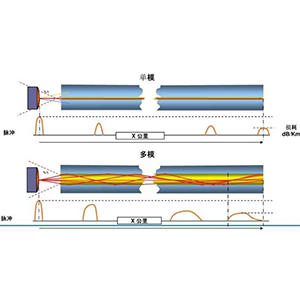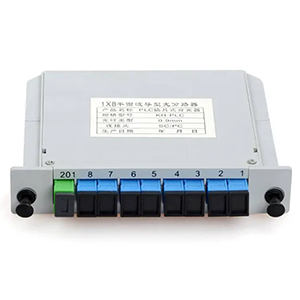Hello everyone! The Cisco ISR 4451 router plays a vital role in modern enterprise networks, especially in medium-sized and large enterprises and branch office networks. Today, I will focus on the main uses of the Cisco ISR 4451, including how it can be used as an edge router for enterprise branches, providing high-performance routing and security functions, and its interconnection role in the enterprise core network.
By supporting integrated network service functions such as VPN, firewall, and QoS, the Cisco ISR 4451 simplifies network deployment and improves the efficiency and security of the overall network. If you are looking for a high-performance router that suits your network needs, please feel free to contact me, we will provide you with the most professional advice and high-quality products to help you build a stable and efficient network environment!
What is the Cisco ISR 4451 router
The Cisco ISR 4451 router is a high-performance, modular enterprise-class integrated services router for medium-sized and large enterprises and data centers. It supports high throughput, virtualization, WAN optimization, and advanced security features. With flexible module slots, different interfaces and service modules can be expanded to meet complex network requirements.
1. Basic information of Cisco ISR 4451:
- Cisco ISR 4451 belongs to the Cisco ISR 4000 series integrated service router product line.
- This series of routers is mainly positioned in the network environment of medium and large enterprises and branches, providing comprehensive routing and service functions.
2. Main hardware configuration of Cisco ISR 4451:
- CPU: 4-core 2.2GHz high-performance x86 processor.
- Memory: 8GB DDR3 memory is standard, and the maximum support is 16GB.
- Storage: Built-in 120GB SSD solid state drive.
- Interfaces:
- 4 10GbE SFP+ optical/electrical multiplexing interfaces.
- 8 GbE electrical interfaces.
- 2 USB interfaces.
- Power supply: supports single power supply or 1+1 redundant power supply module.
In addition, the Cisco ISR 4451 router also integrates rich software functions, including various routing protocols, virtualization, security protection, VPN, etc., which can provide comprehensive routing and service capabilities for enterprise-level networks. In general, the Cisco ISR 4451 is a powerful and high-performance integrated service router, which is very suitable for deployment in the core network of medium and large enterprises and branches to meet the needs of complex network environments.
What are the main uses of Cisco ISR 4451?
The Cisco ISR 4451 router is mainly used to provide enterprise-level network solutions, covering WAN connections, data center access, and branch office services. It supports virtualization, network optimization, security protection, and high throughput requirements, and is suitable for efficient network traffic management, optimizing application performance, and ensuring network security.
1. As an edge router for enterprise branches:
- The Cisco ISR 4451 router can be deployed at the network edge of enterprise branches and serve as the core routing device of the branch.
- It can provide high-performance routing forwarding and perfect security protection functions to meet the basic network needs of branches.
2. Support integrated network service functions:
- The Cisco ISR 4451 router has built-in VPN, firewall, QoS and other rich network service functions.
- These integrated services can greatly simplify the deployment and management of branch office networks and improve overall operation and maintenance efficiency.
3. Act as an interconnection node for the enterprise core network:
- The Cisco ISR 4451 router can connect the enterprise headquarters network and each branch office network, acting as a key interconnection node in the overall network architecture.
- It can achieve high-speed interconnection between the headquarters and branches, ensuring the overall connectivity of the enterprise’s internal network.
In general, the Cisco ISR 4451 router is very suitable for deployment at the network edge of enterprise branches with its powerful performance and multi-functional integration, and can also be used as a key interconnection device connecting the headquarters and branches. It provides a solid foundation for the enterprise network architecture and helps to improve the overall network service capabilities.
The value of Cisco ISR 4451 in different application scenarios
Cisco ISR 4451 provides significant value in different application scenarios. In the headquarters or data center, it achieves efficient traffic management and service integration through high throughput and virtualization support. In the branch office, it provides reliable WAN connection and security protection to optimize network performance. Its flexible modular design meets various business needs and improves network flexibility and scalability.
1. Application in branch networks of small and medium-sized enterprises:
- Provide high-performance edge routing and security functions:
- Cisco ISR 4451 can provide powerful routing forwarding and security protection capabilities at the edge of the branch network.
- Meet the network performance and security needs of small and medium-sized branches.
- Simplify branch network deployment:
- Cisco ISR 4451 integrates a wealth of network service functions, which can greatly simplify branch network deployment and management.
- Reduces the complexity of branch network maintenance.
2. Application in large enterprise branch networks:
- Support higher bandwidth and number of connections:
- Cisco ISR 4451 provides more powerful hardware performance, which can support the higher bandwidth and number of connections of large branches.
- Combines routing, security and other network services:
- In addition to basic routing and security functions, Cisco ISR 4451 also supports a variety of network services such as VPN and QoS.
- It can meet the diverse needs of large enterprise branches for network services.
3. Application in enterprise network interconnection scenarios:
- As an interconnection node between headquarters and branches:
- Cisco ISR 4451 can serve as a key interconnection device between the enterprise headquarters network and the networks of various branches.
- Ensure the interconnection of the entire network:
- Through the Cisco ISR 4451, high-speed interconnection between the headquarters and branches can be achieved to ensure the connectivity of the enterprise’s overall network.
In general, the Cisco ISR 4451 router can play a unique role in enterprise networks of different sizes with its excellent performance and integrated functions. Whether it is a small or medium-sized branch, a large branch, or an enterprise-level network interconnection, the Cisco ISR 4451 can provide a solution that meets the needs.
Best Practices for Deploying Cisco ISR 4451
Best practices to follow when deploying Cisco ISR 4451 include: selecting appropriate modules and interfaces to ensure that business needs are met; configuring redundant power supplies and cooling systems to improve reliability; implementing network segmentation and security policies to protect data flows; using network monitoring tools to track performance and traffic; regularly updating firmware and configurations to keep the system stable and secure.
1. Select appropriate configurations based on different application scenarios:
- Select appropriate hardware resources such as CPU and memory:
- Select the appropriate Cisco ISR 4451 model and hardware configuration based on the scale and business needs of the branch network.
- Ensure that CPU performance and memory capacity can meet current and future usage needs.
- Enable corresponding functional services according to business needs:
- If the branch office needs advanced functions such as VPN and firewall, you can enable and configure these services accordingly.
- Avoid enabling unnecessary functions to avoid wasting resources.
2. Optimize the network performance of Cisco ISR 4451:
- Reasonably configure interface bandwidth and QoS policy:
- Reasonably configure the bandwidth of each interface according to the actual bandwidth requirements of the branch network.
- Use QoS function to allocate sufficient bandwidth resources for key business traffic.
- Use advanced features to improve overall efficiency:
- Enable advanced features of Cisco ISR 4451, such as virtualization and performance optimization, to improve overall network efficiency.
- Rationally plan and configure these advanced features to achieve the best performance.
In general, the deployment of Cisco ISR 4451 needs to be customized according to the actual application scenario and business needs. It is necessary to select the appropriate hardware and function combination, and to optimize network performance in a targeted manner to maximize the value of Cisco ISR 4451. Only by strictly following best practices can we ensure that Cisco ISR 4451 plays its due role in deployment.
Summary
I hope today’s content has helped you understand the value of Cisco ISR 4451 in different application scenarios. Whether in branch networks of small and medium-sized enterprises or in core network interconnection of large enterprises, Cisco ISR 4451 can provide excellent performance and services.
If you need further help or have any questions about Cisco ISR 4451, please contact me immediately. We will provide you with comprehensive support and solutions to ensure that your network system is efficient and stable. Choosing our products and services, you will experience unparalleled network performance and reliability. Looking forward to working with you to achieve the best configuration of the network system!
Cisco ISR 4451 Purpose FAQ
The Cisco ISR 4451 is designed as a high-performance integrated services router for branch offices. It provides routing, security, and WAN optimization services to support complex network environments.
Key features include advanced routing capabilities, integrated security services, WAN optimization, high throughput, modularity, and support for various network services like voice, video, and data.
The Cisco ISR 4451 includes built-in security features such as firewall protection, intrusion prevention systems (IPS), VPN support, and secure connectivity to help protect against cyber threats and secure data transmission.
Yes, the Cisco ISR 4451 supports WAN optimization features, including Cisco Performance Routing (PfR) and application optimization, to improve network performance and application delivery.
The Cisco ISR 4451 is suitable for medium to large branch offices due to its high performance and scalability, which are designed to handle substantial data traffic and complex networking requirements.
The Cisco ISR 4451 supports various modular options, including service modules for additional functionality such as voice, video, and advanced security, as well as network interface modules (NIMs) for flexible connectivity.
The Cisco ISR 4451 supports high availability features like redundant power supplies and fans, as well as failover capabilities to ensure continuous operation and minimize downtime in the event of hardware failures.
The Cisco ISR 4451 can accommodate a wide range of interfaces, including Ethernet, Fiber, and serial interfaces, through its modular interface cards and network interface modules (NIMs).
Yes, the Cisco ISR 4451 supports voice and video applications through optional service modules and integrated services, enabling unified communications and high-quality multimedia transmission.
The Cisco ISR 4451 offers scalability through its modular design, allowing the addition of various service modules, network interface modules, and software licenses to meet growing network demands and evolving business needs.



